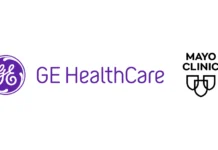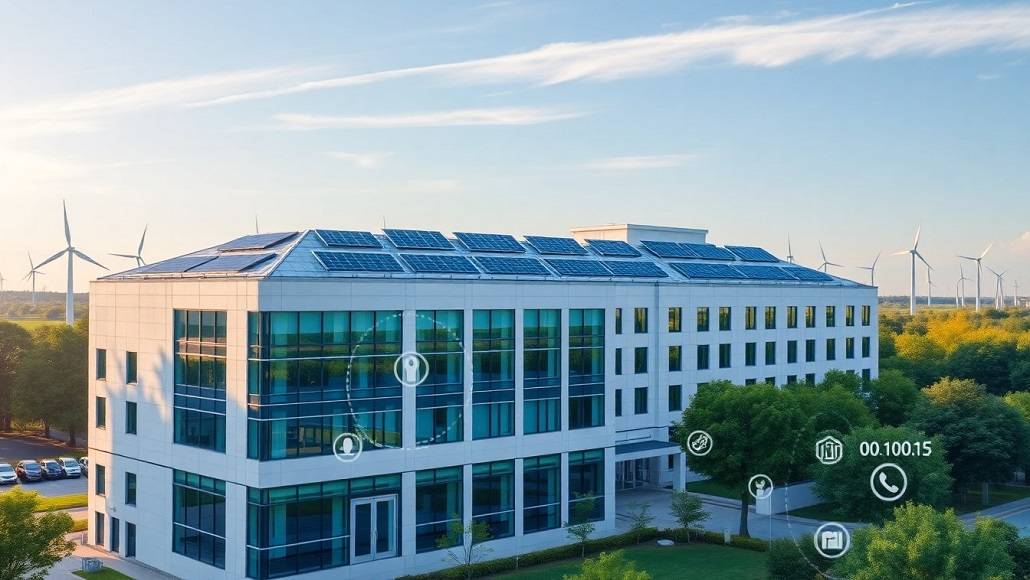The healthcare industry stands at a very important juncture where the need for operational excellence goes on to intersect with the rising need for environmental sustainability. One of the most pressing concerns in this spectrum is the energy optimization demand within the healthcare facilities. Hospitals, along with medical centers, are among the highest consumers, which utilize massive amounts of electricity, cooling, and heating in order to run life-saving equipment as well as lighting along with HVAC systems.
In order to address this, executing energy-efficient systems in healthcare facilities has gone on to emerge as a very crucial strategy that offers not just environmental advantages but also financial savings along with enhanced operational dependence. But while the benefits are pretty evident, the road to achieving energy efficiency is very complex, and the sector is fraught with challenges that need solutions that are very innovative.
Let us understand the energy footprint when it comes to healthcare facilities
Healthcare facilities are very distinct in their energy demands. Unlike residential and commercial buildings, hospitals must function 24 x 7, maintain stringent temperature and air quality controls, and power numerous specialized medical equipment. As per the US Energy Information Administration (EIA), healthcare buildings go on to consume almost 5% of overall commercial energy within the United States, thereby making them one of the most energy-intensive sectors.
It is well to be noted that a single hospital that functions within the US can go on to consume 234 kBtu per square foot on average annually, which is three times more than a regular commercial building.
Most of this energy is used for HVAC systems, lighting, medical devices, and water heating. Outside of the US, especially in developing regions, hospitals face more inefficiencies because of outdated systems as well as inadequate infrastructure, thereby further increasing their energy footprint.
The fact is that this kind of extensive energy consumption comes along with environmental consequences. Carbon emissions, which come out of healthcare facilities, go on to contribute quite significantly to the carbon footprint across the world. A study that was published by Health Care Without Harm went on to pinpoint that the healthcare sector is responsible for almost 4.4% of overall global greenhouse gas emissions. Such statistics highlight the immediate need for executing energy-efficient systems in healthcare facilities as a means to both lessen the environmental effect and enhance the operational resilience.
The barriers to implementing energy efficiency within healthcare
Although the concept of energy efficiency happens to be universally appealing, the implementation within healthcare facilities goes on to present a very distinct set of challenges. One of the foremost issues is the functional complexity when it comes to hospitals. Medical environments demand a very uninterrupted kind of scenario, which is pretty evident in both power supply and precise climate control cases, especially in spaces such as intensive care units, operating rooms, and laboratories. Any disruption when it comes to the transition to energy-efficient systems could directly go on to compromise patient care as well as safety.
It is well to be noted that infrastructure barriers also pose a prominent challenge. There are many healthcare facilities, specifically the old buildings, that depend on the legacy systems that are not compatible with the modern energy-efficient tech. Retrofitting such kinds of facilities can need a substantial amount of investment, both when it comes to technology as well as skilled manpower. For instance, transitioning to energy-efficient HVAC systems might go on to involve extensive structural alterations, thereby creating logical difficulties for facilities that cannot afford any kind of downtime.
Apparently, financial constraints happen to be another notable challenge. While the long-term savings when it comes to energy-efficient systems in healthcare facilities are well documented, the initial capital that is required for execution can go on to deter many healthcare administrators. Budget allocations within the healthcare sector are often very heavily skewed towards immediate patient care, leaving very little room when it comes to investments in upgrades related to infrastructure.
In addition to this, the lack of awareness as well as expertise within energy management in healthcare settings slows the progress as well. There are many facility administrators who are not aware of the latest tech or the best practices that are leading to decision-making that is suboptimal and also miss opportunities when it comes to energy savings.
What are the innovative solutions when it comes to energy efficiency within the healthcare setting?
In spite of the challenges, the sustainability drive has spurred the development of innovative solutions that are aimed at going past the execution of energy-efficient systems within healthcare facilities. A combination of regulatory incentives, tech advances, and partnership efforts is indeed paving the way for a healthcare environment that is sustainable.
The most promising solution happens to lie in the smart technologies. Building automation systems (BAS), which are equipped with IOT sensors along with AI-powered analytics, are indeed transforming how energy gets managed within healthcare settings. These systems track real-time energy use, detect any kind of inefficiency, and also alter operations in a dynamic way in order to minimize any sort of waste. For instance, smart HVAC systems can go on to optimize the airflow along with temperature based on occupancy levels, thereby decreasing the cost of energy without compromising on any kind of patient comfort.
Apart from this, renewable energy integration is another impactful avenue. There are many hospitals that happen to be now investing in on-site solar panels, wind turbines, and geothermal systems in order to offset their increasing dependence on conventional sources of energy. As per the Global Green and Healthy Hospitals Network, facilities that go on to incorporate renewable energy can decrease their carbon footprint by almost 20 to 30% every year.
Energy-efficient lighting is yet another area of focus. The replacement of traditional fluorescent lights with LED systems can indeed lead to a very prominent energy saving. LEDs consume almost 75% less energy as compared to the standard lighting solutions and also have a longer lifespan, thereby reducing both maintenance as well as operational needs.
Then there are financial tools as well as incentives, which are also playing a very critical role when it comes to addressing budgetary issues. Governments as well as organizations across the world are offering subsidies, grants, and tax breaks in order to embrace the adoption of technologies in healthcare that are very energy efficient. For example, the US Department of Energy initiative known as the Better Buildings Initiative offers technical assistance as well as financial incentives to those hospitals that are aiming to enhance their energy performance.
And finally, staff education as well as stakeholder engagement is very crucial in order to make sure of sure-shot success when it comes to energy-efficient initiatives. Training the healthcare professionals in terms of the significance of energy conservation, teamed with institutional policies that enrich practices that are sustainable, can go on to lead to improvements that are measurable with time.
The wider effect on patient care as well as environmental sustainability
Advantages of executing energy-efficient systems in healthcare facilities Goes far beyond cost savings. At the center, energy efficiency elevates the complete quality of care that is delivered to patients. Hospitals having optimized energy systems go on to experience few disruptions and hence make sure critical equipment and services remain operational at all times.
Enhanced quality along with lighting helps energy-efficient technologies to contribute towards healthier environments for both staff as well as patients.
From an environmental point of view, the shift to energy efficiency goes on to represent a very prominent step towards achieving sustainability goals across the world. As the healthcare sector is a very prominent contributor when it comes to greenhouse gas emissions, the widespread adoption of energy-efficient practices can help lessen climate change and also promote environmental stewardship.
In addition to this, the financial savings that are generated due to energy efficiency can get reinvested for medical innovation as well as patient care. A study done by Practice Greenhealth went on to reveal that US hospitals can save almost $15 billion every year by way of energy-efficient upgrades; these funds could very well be redirected to enhancing healthcare facilities and infrastructure.
Conclusion
The journey when it comes to sustainability within healthcare is a responsibility as well as an opportunity. Executing energy-efficient systems in healthcare facilities is not just an operational adjustment, but it is also a kind of strategic imperative that syncs with the environmental objectives and financial prudence.
Although there are challenges like infrastructure limitations, financial constraints, and functional intricacies that cannot be overlooked, they are completely outweighed by the benefits, which are long-term. By way of smart technologies, financial incentives, and renewable energy adoption, the healthcare sector can pass through such barriers and also pave the way for a future that is very sustainable.
As the world goes on to face the double pressure of growing healthcare demands along with environmental challenges, energy efficiency within healthcare facilities indeed stands out as a solution that is transformative. It embodies the potential to not just decrease the operational cost along with environmental impact, but it also elevates the quality of care, thereby making sure that the healthcare system’s resilience is maintained for generations.


















